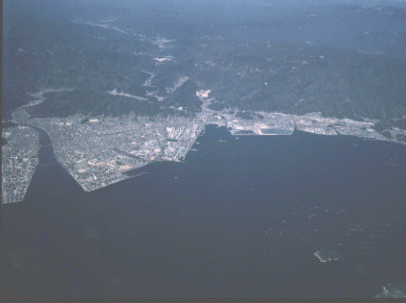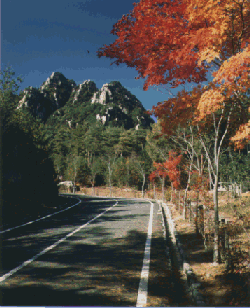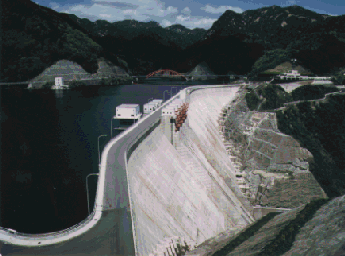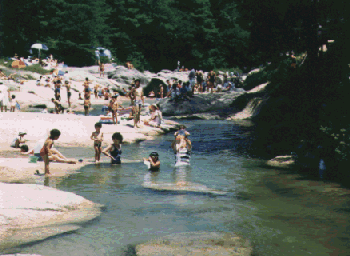Meaning of the city symbol

Meaning of the city symbol | |
|---|---|
 |
City Symbol [Since December 27th, 1954] |
 |
a view of Otake City |
Mt.Mikura |
Yasaka Gorge |
|
|---|---|---|
 |
 |
|
The 702-meter-high mountain is also called "Sanbon Yari" (The Three Spears)
because of its precipitous shape. |
This is a beautiful gorge stretching about 1.5 kilometers upstream from Yasaka
Dam. |
Yasaka Dam |
Jagui-Iwa |
|
|---|---|---|
 |
 |
|
This is a multipurpose dam 120 meters in height and 540 meters in length with
a reservoir capacity of 112 million cubic meters, large for Japan. |
Legend has it that a serpent which lives on Mount Mikura ate this rock down to
its present shape. |
Kamei Park |
Uta no Sakamichi |
|---|---|
 |
This promenade was built in Kamei Park in commemoration of the 40 years Miyuki
Ishimoto, who was born in the city of Otake, spent as a lyricist. Seven song
monuments inscribed with lyrice from his songs "Kanashii Sake"(Sad Sake) and
"Akogare no Hawaii Kooro"(A Longed-For Voyage to Hawaii) and a monument to
Mr.Ishimoto himself dot the promenade, inviting visitors into his world of
lyrics with "ninjo"(human feelings) and "roman"(romanticism). |
Kamei Castle was built by Masanori Fukushima as one of the support castles for
Hiroshima Castles. The area of the ruins is a park known as a scenic spot for
cherry blossoms, and the views of the Inland Sea from the remains of the old
castle building are marvelous. |